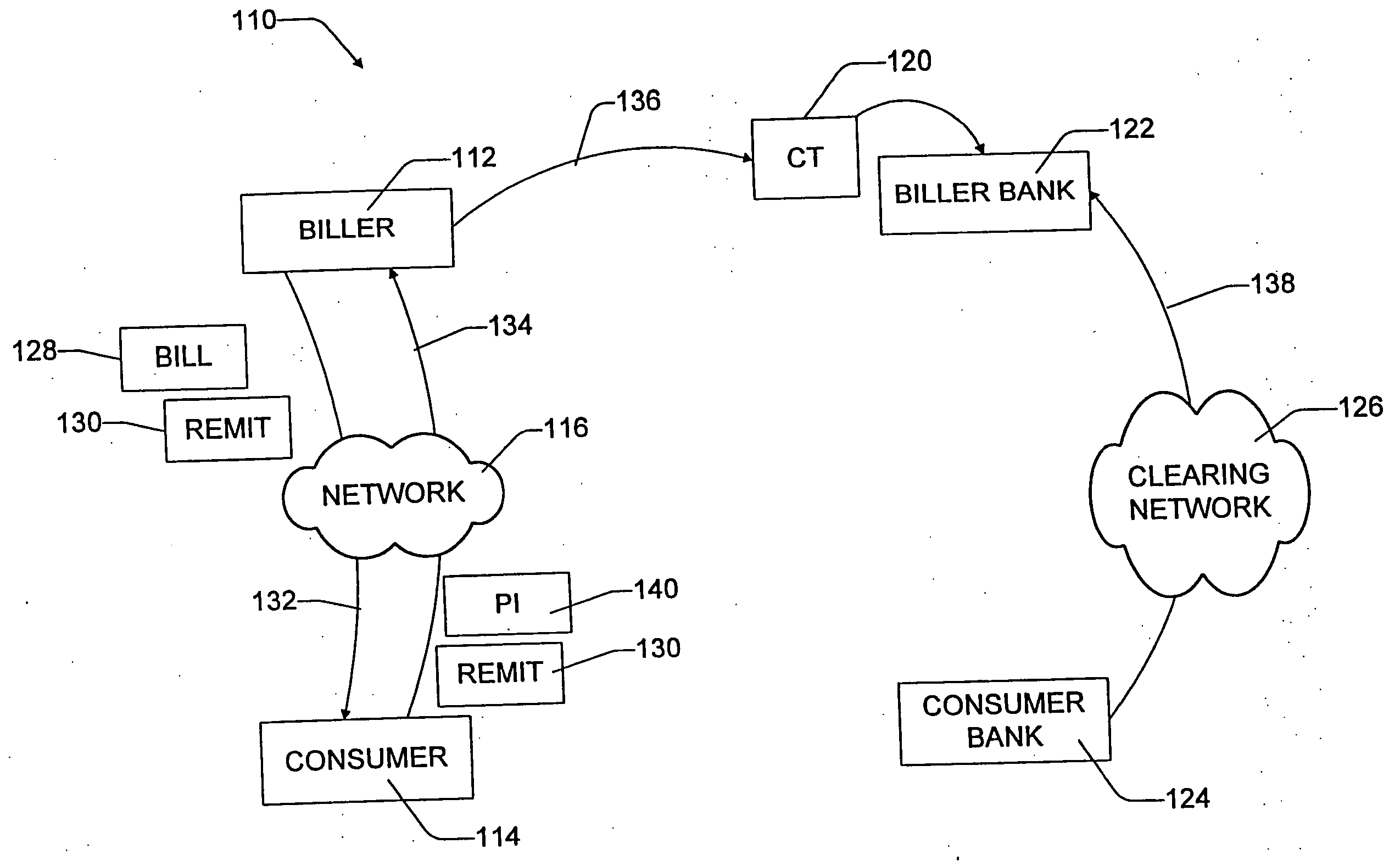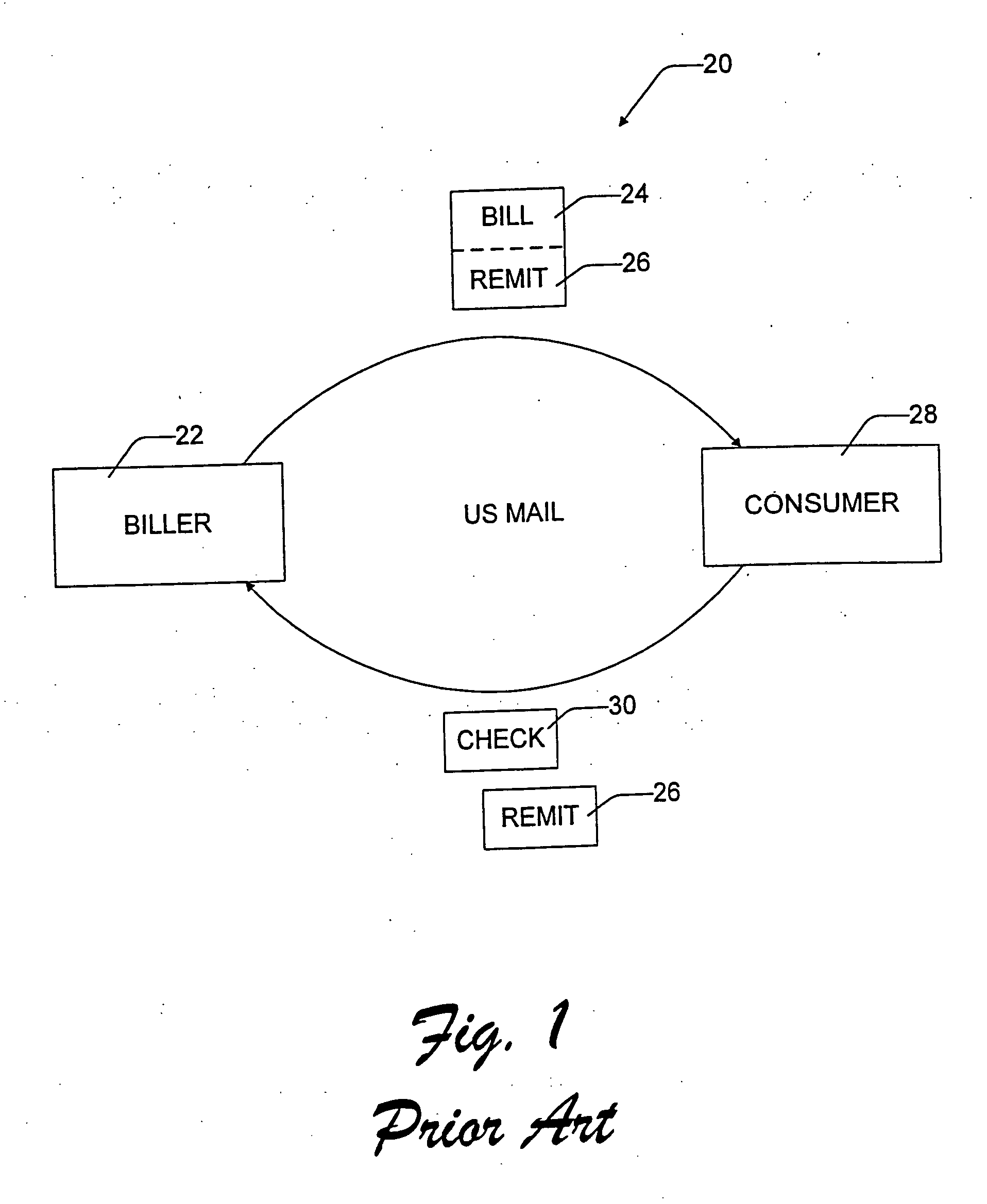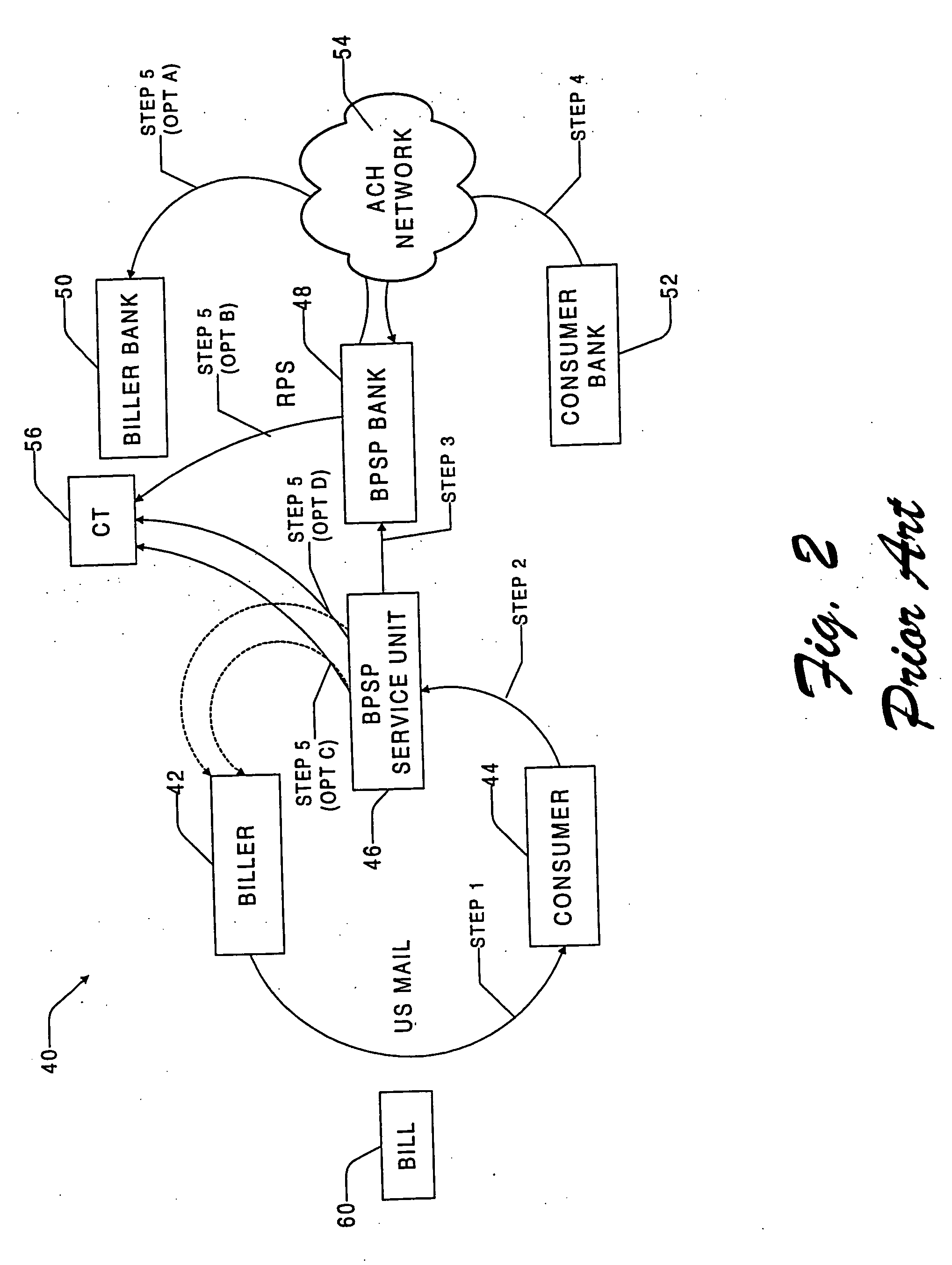In these bill payment cases, it is much more difficult to link the payment to the particular goods or services provided by the supplier, particularly in view of the shear volume of checks collected each month.
At a cost of $0.32 to $3.50 per piece of mail (including paper, printing and
processing costs, etc.), with an average cost of $0.50, the delivery mechanism of the traditional paper-based bill presentment and bill remittance
system is expensive.
A drawback to the paper-based system 20 is that it is out-dated in an age where most billers use automated, computer-based accounting systems and a growing number of consumers have computers which could be used to improve the bill delivery, remittance, and settlement process.
The cost to process paper-based remittance information is very high and must be incurred by the biller.
Not infrequently, however, errors arise in this paper-based mechanical /
human system.
The consumer might fill out the remittance stub incorrectly, or damage the stub by tearing across the bar coded account number, or simply forget to return the stub, or return the stub of another biller.
This dramatically increases the cost of remittance
processing.
In some cases, it costs the biller more to process the payment than the amount actually being paid by the consumer.
Unfortunately, many consumers do not like the direct debit system.
Complaints registered by these consumers include a lack of control over their own
bank accounts and the difficulty of correcting mistakes made by the direct debit system, due to a consumer changing
bank accounts or biller accounts.
More specifically, the consumers are concerned with loss of control over the payment date and amount of the debit.
In some businesses (such as
credit card companies), it might be inappropriate to impose certain payment amounts in which significant revenues would be lost if consumers paid the full amount of the bill every month.
In general, these
electronic systems are directed primarily to the bill payment phase, with little innovation to the bill presentment phase.
The current BPSP system has several drawbacks One drawback is that it only addresses the payment phase, leaving no improvement to the bill presentment phase.
This yields an unacceptably high error rate and is expensive.
Another drawback is that the consumer does not know ahead of time when his / her account will actually be debited.
This late posting periodically will result in undesired late charges to consumers.
The Visa bill pay system 90 has a limitation in that the biller has little or no control over the format concerning how the bill is presented to the consumer or how the remittance information is to be returned.
While it may be possible for the biller and biller bank to agree on a
data format for the little amount of data included in the A / R file, the format cannot be independently controlled by the biller.
Additionally, the biller does not have exclusive control over the type or quantity of information that is ultimately remitted back.
The limitations imposed on the biller are a result of requiring the remittance information to be routed back through the banks and VisaNet® network before it is downloaded to the biller.
It is further noted that all of the above
electronic systems in FIGS. 2-3 have a drawback in that the biller must send a paper bill, or an electronic message, that conforms at least in part to requirements imposed by the
supporting system.
The biller is not free to create its own format and appearance for the bill, nor is the biller free to create the content and format of the remittance information.
 Login to View More
Login to View More  Login to View More
Login to View More 


